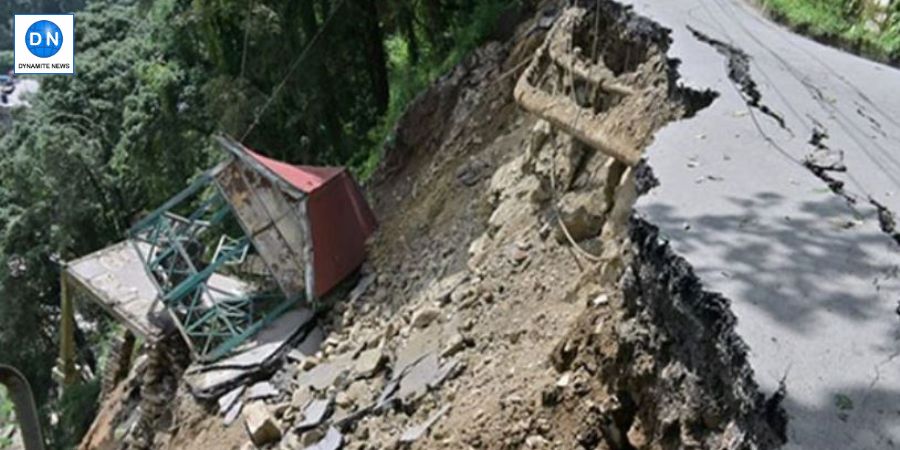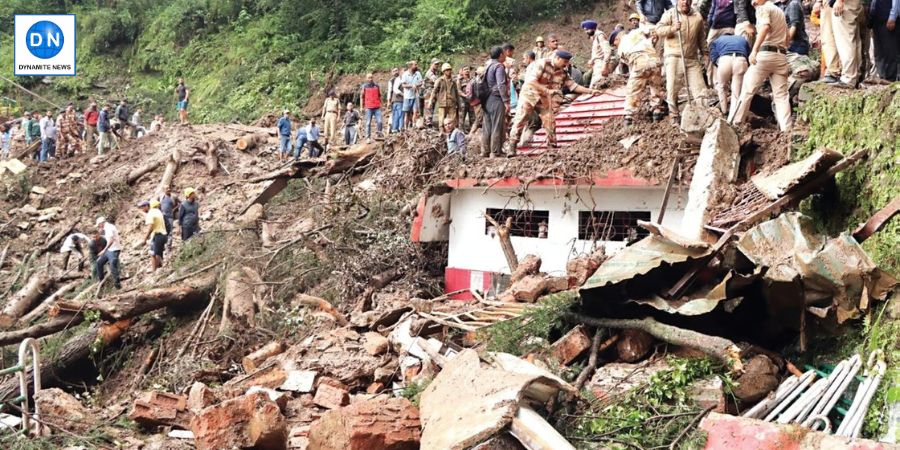Shimla's Sinking Ground: Experts call for urgent water management
The sinking areas of Shimla city are increasingly concerning scientists and geological experts, who have observed a rising number of landslides in the region. Read further on Dynamite News:

Shimla: The sinking areas of Shimla city are increasingly concerning scientists and geological experts, who have observed a rising number of landslides and ground subsidence in the region. Experts stress that controlling and channelling surface water is crucial to prevent further soil saturation and mitigate the risks associated with these sinking areas.
Dr. S.S. Randhawa, Principal Scientist at the Centre for Climate Change within the Department of Environment, Science, and Technology of the Government of Himachal Pradesh, is leading research on this issue. Heading a geological team that studied and reported on last year's floods in Shimla, Dr. Randhawa emphasized the need for a comprehensive plan to guide the city's future development.
A geological survey will be conducted
He stated, "A geological survey will be conducted in Shimla city. The rock strata are weakening each year, and the homogeneous lithology, coupled with water seepage, is causing landslides due to the overburden on the hill surface."
Also Read |
Hailstorm, sharp showers lash Shimla

Dr. Randhawa explained that the geological structure of the rocks, including their type and the extent of groundwater infiltration, plays a significant role in the subsidence of certain areas. "In areas where the rock strata are fractured, or there is homogeneity in lithology, weak zones begin to sink. For example, in the Comly Bank area of Shimla, the situation is severe. The area is under thrust pressure, and the rocks are shattered. You can see changes and increased pressure, which lead to sinking, especially in areas with water seepage," he elaborated.
MLA Crossing area leading to debris slides
He further mentioned that in places like the MLA Crossing area and Shiv Baori, overburden and the thickness of the weight on the rock surface have caused the strata to become oversaturated, leading to destabilization and debris slides. "On the other side of the Advanced Study area, the rocks are fractured, leading to settlement and cracks, which increase pressure and result in landslides," Dr. Randhawa noted.
To mitigate these risks, Dr. Randhawa highlighted the necessity of controlling surface water systematically to prevent subsurface moisture from remaining high throughout the year. "We must work on controlling surface water in an organised way and channelling it properly to ensure that subsurface areas do not stay moisturised continuously, especially during monsoons, which can turn these areas into potential zones for landslides," he added.
Also Read |
HP: Man arrested with 2 leopard skins
Pointed out geological challenges
He also pointed out the geological challenges in specific areas of Shimla, such as the narrow hill slopes and wide downhill valleys in the Samej area, which have caused flooding due to high water velocity this year. (with Agency inputs)
 Dynamite News
Dynamite News 